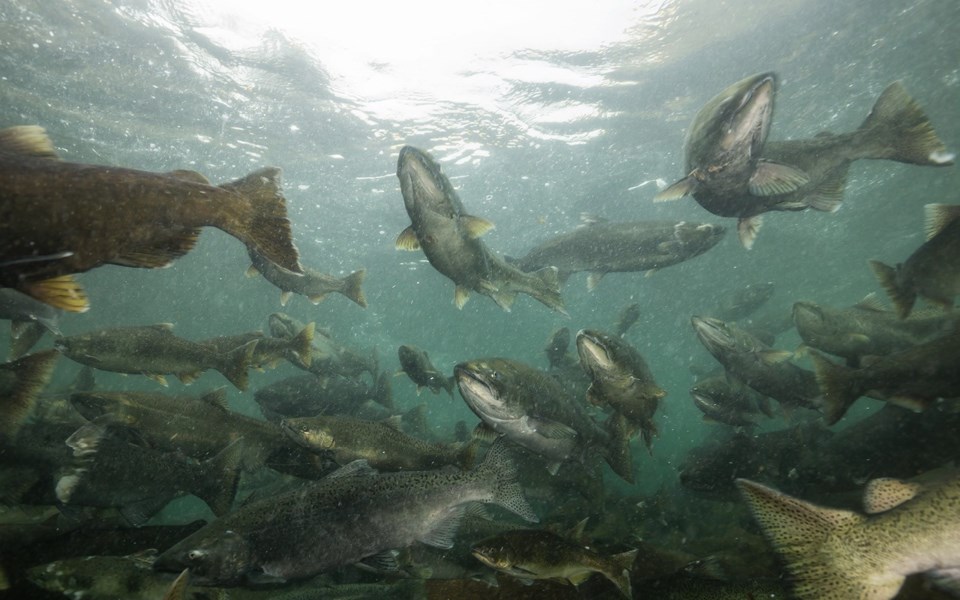It's time for our federal government to recognize the importance of sport fishing to the British Columbia economy.
The province recently released an updated British Columbia's Fisheries and Aquaculture Sector Report that showed the B.C. sport-fishing sectors contribution to the B.C. economy for 2016:
• $1.1 billion in annual sales;
• $398 million GDP contribution to B.C.;
• 9,000 jobs resulting in 3,950 person-years of employment;
• The public fishery is the single-largest economic driver of all B.C. fisheries, yet harvests less than 15 per cent of halibut and 10 per cent of salmon coast-wide. It is estimated that the public fishery accounts for less than four per cent of all fish harvested in B.C.
Department of Fisheries and Oceans (DFO) has put forward a proposal that will see sport fishing for Chinook salmon closed on the east- and west-side of Vancouver Island from April 1 to July 31, 2019. (This comes after the government) reduced limits for most of last season on Chinook salmon from two a day to one a day for sport fishers.
These closures are being taken to address concern around the early timed returning Fraser River Chinook salmon 4.2 and 5.2 (these particular Chinook spend two years in fresh water before entering the ocean).
Now, it is key to take action on protecting these stocks of Chinook, but mass closures are not the answer and will do little to address the problem. There are many diverse stocks of Chinook and some are doing very well and angling opportunities for these salmon should still be allowed to take place. These closures will cripple the sport-fishing industry and be very costly to the B.C economy, with little to no benefit to improving Chinook salmon numbers.
The DFO's own Creel Survey, Avid Angler DNA data, and other sources from within DFO, show that the recreational fishery does not catch these stocks of concern. They make up less than 0.5 per cent of the saltwater recreational catch.
The answer is that we need to see real action taken to improve all Chinook salmon numbers.
DFO should recognize the importance of healthy, forage-fish populations, such as herring. Commercial herring fisheries should be substantially reduced, which is not happening with openings starting this March. Fisheries for stocks such as pink and chum salmon in commercial openings should be done, while recognizing the importance that these fish make in contributions of nutrients to the streams they return to spawn in, and the benefit to other salmon stocks such as Chinook.
Habitat degradation has to stop and recognition of the importance of protecting and growing fish habitat is key for better in-river success of spawning, and out-smolt migration.
Hatcheries also need to play a role in rivers that have lost much of their habitat and have low natural reproduction.
We need to see reduced predation by pinnipeds, such as seals and sea lions, the population of which has exploded in recent years in B.C. waters. They consume large numbers of salmon smolts, as they migrate out to the ocean. They specifically target larger smolts such as the two-year-old early Fraser River Chinook, rather than smaller ones. It's time to look at harvesting pinnipeds to reduce numbers.
In the U.S., they're already having a harvest of 900 sea lions to help save Chinook salmon. There is a group with a proposal before DFO right now for pinniped harvest. Lastly, DFO needs to pay attention to the impacts of salmon farming, which sees the threat of the PRV virus on wild Chinook stocks, as evidenced in the recent study done by the Pacific Salmon Foundation in conjunction with the Strategic Salmon Health Initiative.
Using sport fishing as a scapegoat to appear to be taking action to save early Fraser Chinook is not the answer. It hurts the B.C. economy and will not result in more Chinook salmon returning to spawn. The federal government needs to get serious, about taking meaningful measures to improve Chinook salmon numbers!
Dave Brown // Whistler




